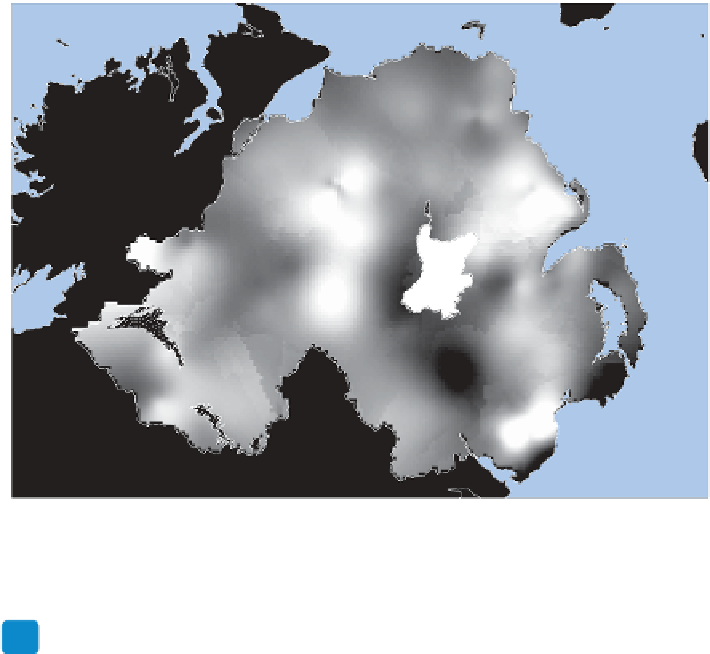Geography Reference
In-Depth Information
Precipitation (mm)
Value
High : 145.19
N
Low : 2.59
Inland water
0
20
40 km
Figure 9.8
Precipitation in July 2006: TPS prediction using 16 nearest neighbours.
Ordinary kriging
9.7
Ordinary kriging is one of a family of kriging methods. Kriging falls within the remit
of a i eld known as geostatistics. Burrough and McDonnell (1998) provide a short
introduction to geostatistics in the context of GIS. h e basis of geostatistics is the
theory of regionalized variables. Geostatistics entails a conceptual division of spatial
variation (at a location
x
) into two distinct parts: a deterministic component (
m
(
x
))
(representing 'gradual' change over the study area) and a stochastic (or 'random')
component (
R
(
x
)):
Z
()
x
=
()
x
+
R
()
x
(9.6)
m
h is is termed a 'random function' (RF) model. h e random part rel ects our uncer-
tainty about spatial variables—what seems random to us is a function of a multiplicity
of factors that may be impossible to model directly (and this does not mean that we
really think variation is random; Isaaks and Srivastava, 1989). In geostatistics, a spa-
tially referenced variable,
z
(
x
), is treated as an outcome of an RF,
Z
(
x
). In other words,
we ef ectively consider an observation to have been generated by the RF model and
this gives us a framework to work with these data. A realization of an RF is called a
regionalized variable (ReV; i.e. an observation). h e theory of regionalized variables
(Matheron, 1971) is the fundamental framework on which geostatistics is based.





















































Search WWH ::

Custom Search